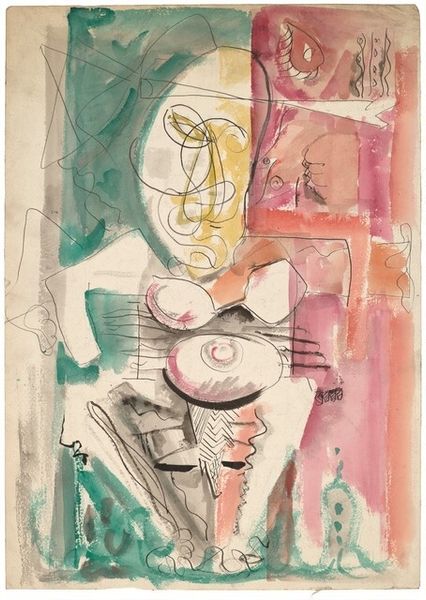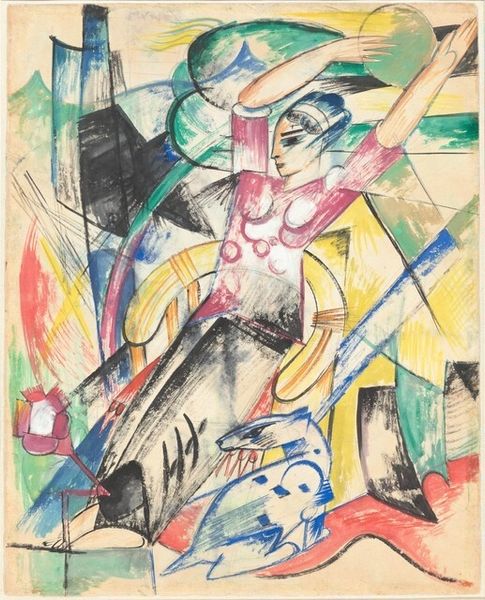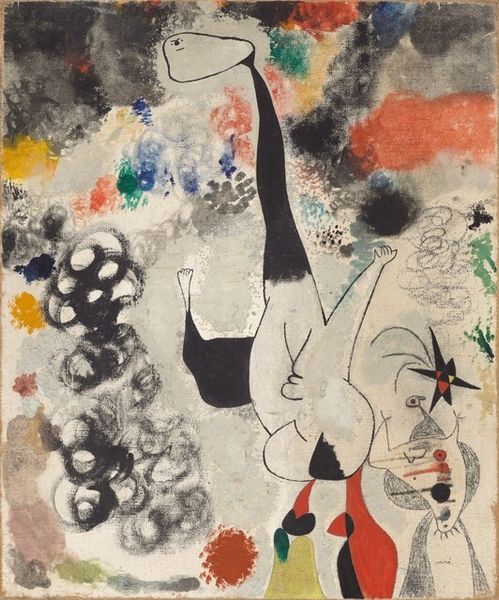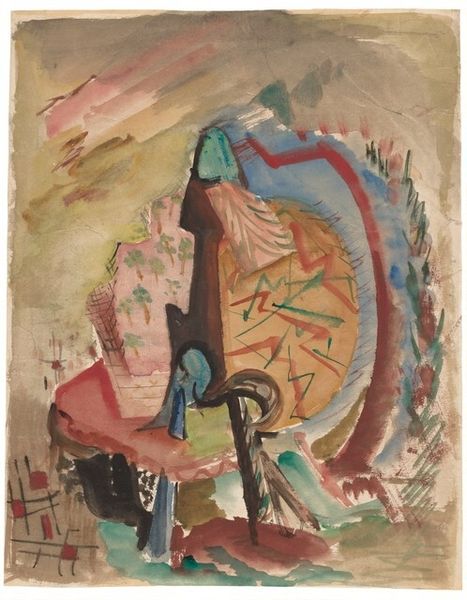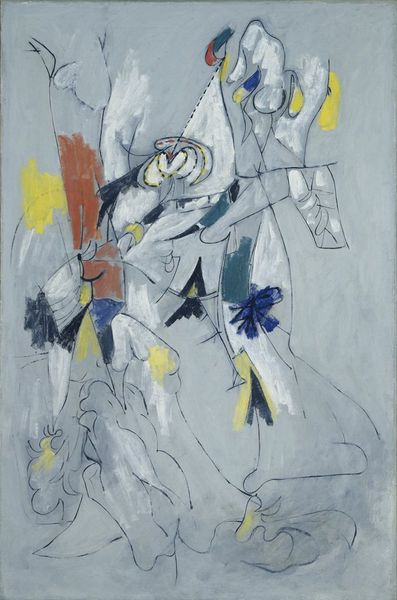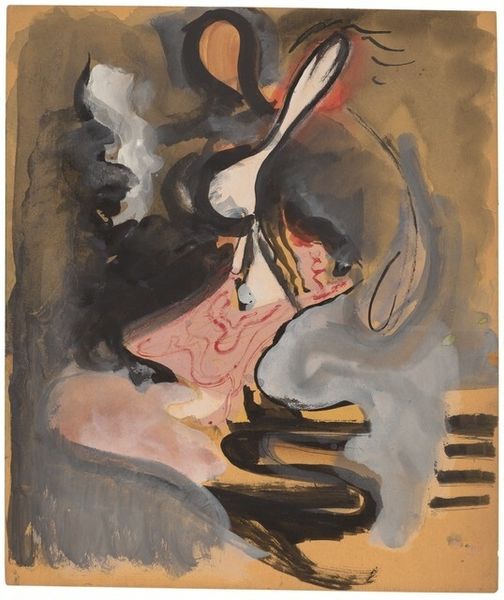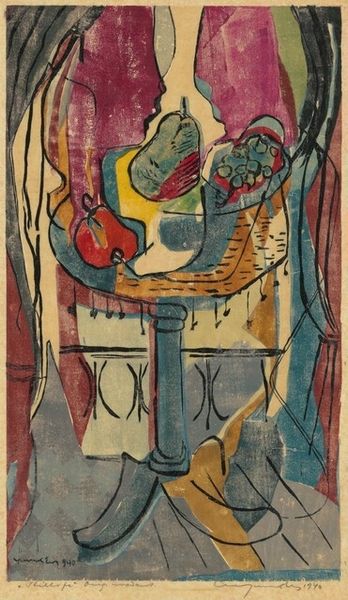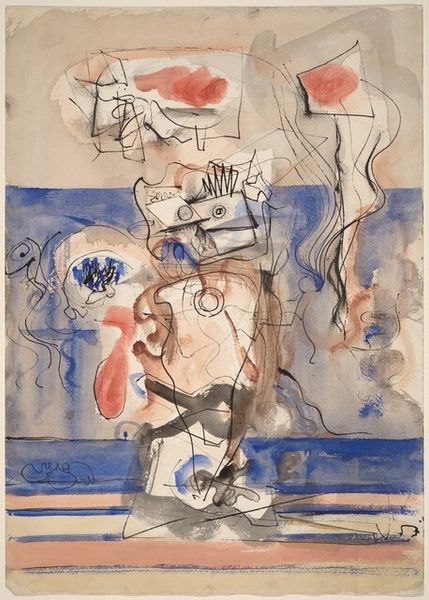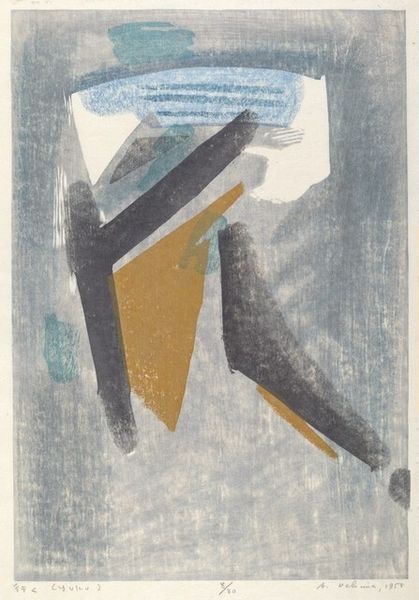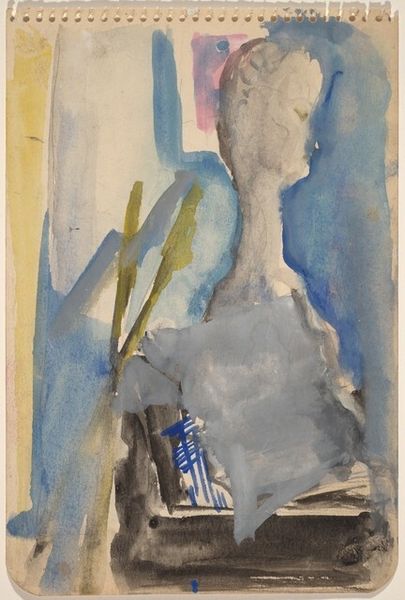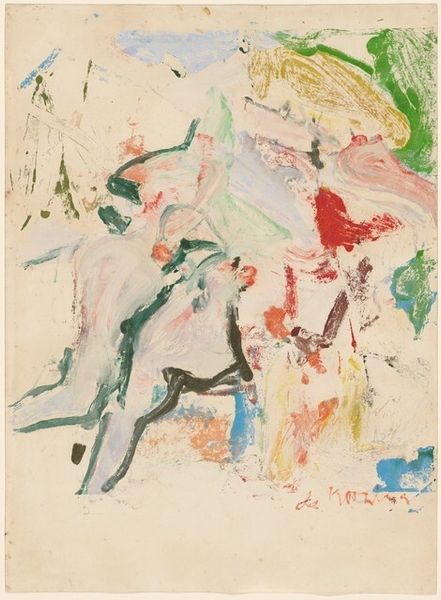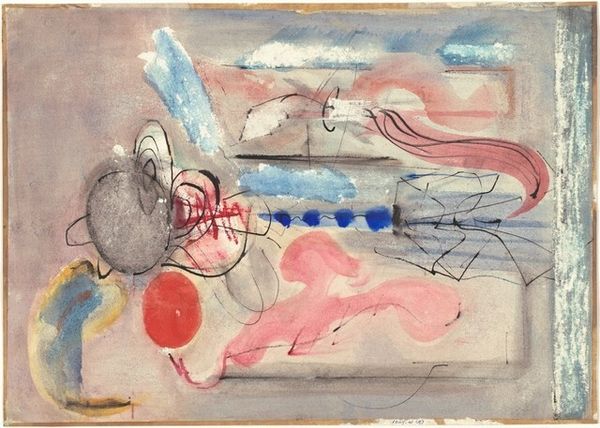![Untitled [recto] by Mark Rothko](/_next/image?url=https%3A%2F%2Fd2w8kbdekdi1gv.cloudfront.net%2FeyJidWNrZXQiOiAiYXJ0ZXJhLWltYWdlcy1idWNrZXQiLCAia2V5IjogImFydHdvcmtzLzRkMDdkZjMyLTJhMjUtNGJmOS1hZjI1LTZkYjViNGYwMjRjNy80ZDA3ZGYzMi0yYTI1LTRiZjktYWYyNS02ZGI1YjRmMDI0YzdfZnVsbC5qcGciLCAiZWRpdHMiOiB7InJlc2l6ZSI6IHsid2lkdGgiOiAxOTIwLCAiaGVpZ2h0IjogMTkyMCwgImZpdCI6ICJpbnNpZGUifX19&w=1080&q=75)
drawing, mixed-media, paper, watercolor
#
abstract-expressionism
#
drawing
#
mixed-media
#
paper
#
watercolor
#
coloured pencil
#
abstraction
#
watercolor
Dimensions: sheet: 57.2 x 39.2 cm (22 1/2 x 15 7/16 in.)
Copyright: National Gallery of Art: CC0 1.0
Curator: This mixed-media work on paper, attributed to Mark Rothko from 1945-46, showcases a fascinating transitional phase in his artistic development. Editor: Immediately, the composition strikes me as precarious. The elements feel disparate, almost as though they might float away at any moment, despite the limited color palette. Curator: It's worth noting that Rothko's career trajectory took off after a decade of socio-political crisis that informed the transition from the figurative towards pure abstraction, marking him as a leading figure of Abstract Expressionism. This particular work offers a peek behind the curtain into his earlier surrealist explorations. Editor: There's certainly a tension here. I’m drawn to the interplay between the sharp angular forms and the softer washes of watercolor. Notice how the coloured pencil marks are creating contrast between flat and vibrant layers. Curator: Consider this: Rothko, along with other artists of his generation, sought to tap into the subconscious, aiming to express universal human emotions and experiences in the wake of World War II. These almost totem-like forms evoke a sense of primordial ritual. Editor: You can feel it. I want to address something less philosophical – the surface texture, rough yet luminous in parts. This variance adds depth and encourages a more tactile perception, doesn’t it? I can imagine a very spontaneous technique here. Curator: That certainly speaks to the process-oriented nature of Abstract Expressionism, though such a raw handling also aligns the work within that postwar mood of societal reckoning. Rothko wanted to communicate profound truths about the human condition, and that quest itself was a very serious, intellectual undertaking. Editor: Even if this drawing shows that search in its nascent stages, there's undeniably an exciting visual rhythm— a unique voice emerging through this early application of the artist’s signature color exploration. Curator: Indeed. I am often struck how these transitional pieces often reflect back the anxieties and hopes of a turbulent historical moment that shaped how art engaged with society for decades afterward. Editor: Yes, the image provides a compelling framework for thinking about abstraction, emotion, and the complex relationships between form and social issues.
Comments
No comments
Be the first to comment and join the conversation on the ultimate creative platform.
